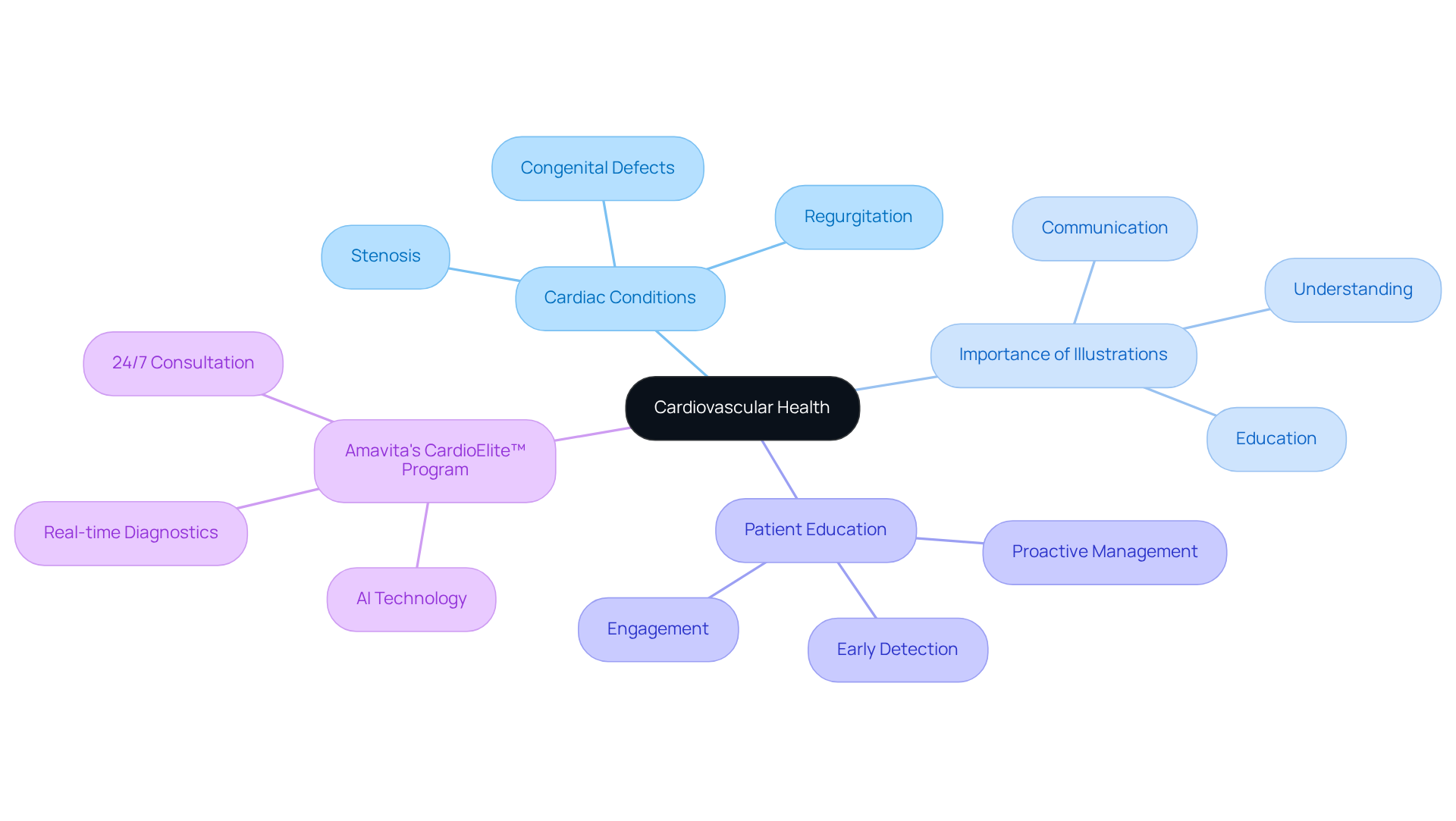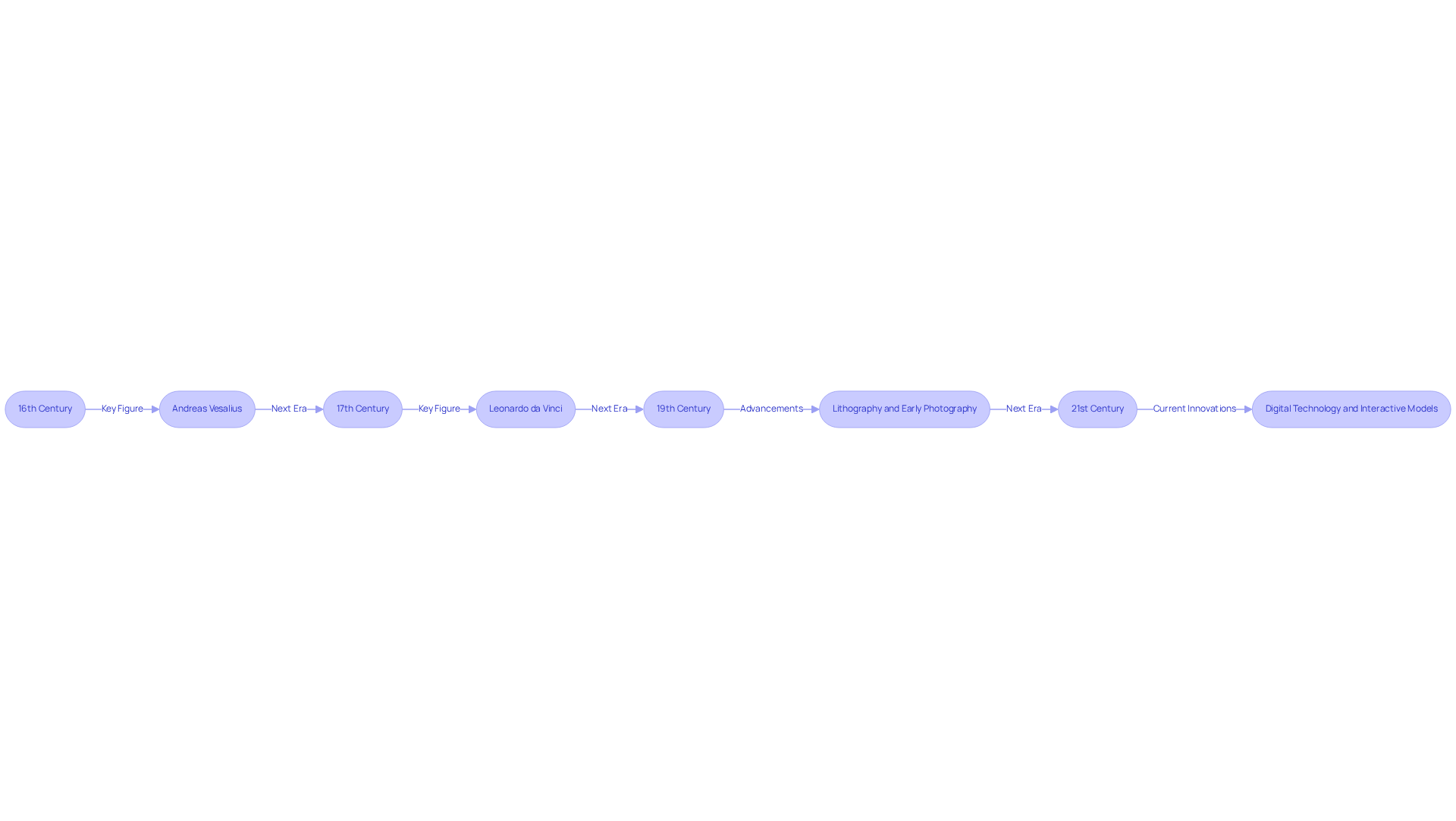


This article highlights the importance of heart valve diagrams in understanding how our hearts function and their vital role in promoting cardiovascular health. You may wonder how these diagrams can help you; they not only allow for a clearer visualization of the structure and function of heart valves but also serve as essential tools for educating patients like you. By understanding these diagrams, you can better communicate your medical conditions, ultimately empowering you to take charge of your heart health.
In addition to providing clarity, heart valve diagrams can alleviate some of the anxiety that comes with medical discussions. They are designed to support your journey towards better health, ensuring you feel informed and confident about your heart. Remember, taking the time to learn about your heart can lead to meaningful conversations with your healthcare provider, fostering a partnership in your care.
Ultimately, we want you to feel supported and understood. Heart valve diagrams are not just technical illustrations; they are a bridge to better health and well-being. We encourage you to explore these resources and reach out for support whenever you need it. Your heart health is important, and you are not alone on this journey.
Understanding the intricate workings of the heart is essential for maintaining cardiovascular health. Heart valve diagrams serve as crucial tools in this pursuit, offering a visual representation that clarifies the roles of the heart's four main valves. These diagrams empower individuals to grasp complex medical concepts that can significantly impact their well-being.
Yet, many still grapple with a pressing question: how can a simple diagram translate to a deeper understanding of heart health and its potential issues? This article gently delves into the importance of heart valve diagrams, highlighting their key features and how they can enhance both patient education and clinical practice.
Together, we can navigate these complexities, ensuring that you feel supported and informed every step of the way.
A cardiac flow chart serves as a visual guide to understanding the heart's vital gates, which play a crucial role in managing blood circulation throughout the organ and into the wider circulatory system. These illustrations typically highlight the four main openings, which can be seen in a heart valve diagram, including the aortic, mitral, pulmonary, and tricuspid structures, showcasing their positions and functions. Understanding the heart valve diagram and other illustrations is important not only for medical professionals but also for individuals like you, as they provide valuable insights into how the heart operates and the significance of each component in maintaining your cardiovascular health.
In addition to this, grasping the structure of the heart can alleviate concerns you may have about your well-being. It’s natural to feel anxious about health matters, but knowing how these components work together can empower you to take charge of your heart health. Remember, you are not alone in this journey; support is always available to help you navigate any uncertainties.
Furthermore, if you have questions or need assistance, don’t hesitate to reach out for help. Understanding your heart is a step towards better health, and there are caring professionals ready to guide you. Your cardiovascular well-being is important, and taking the time to learn about it is a positive step forward.

Cardiac structure illustrations play a crucial role in supporting cardiovascular well-being, as they help identify various cardiac issues, including stenosis, regurgitation, and congenital defects. By visualizing the cardiovascular system's structure, healthcare providers can effectively communicate vital information to individuals about their conditions and treatment options. For example, someone diagnosed with mitral valve prolapse can gain a clearer understanding of how this condition affects blood flow, which can be beautifully illustrated using a heart valve diagram.
In addition to this, these illustrations serve as invaluable resources in educational settings, helping individuals and families grasp complex medical details. With the support of Amavita's CardioElite™ program, which harnesses advanced AI technology and offers 24/7 cardiology consultation, individuals can enjoy proactive management of their cardiovascular health. This program enhances the educational value of circulatory system diagrams by ensuring patients have access to real-time diagnostic information and expert guidance.
It is important to recognize that untreated cardiac issues can lead to serious health risks, such as cardiac arrest and stroke, underscoring the need for early detection. Timely identification of cardiac problems can lead to better outcomes, and in some cases, surgical interventions may be necessary to restore the heart's proper function. By fostering patient education and engagement through resources like cardiovascular illustrations, Amavita empowers individuals to take an active role in managing their cardiovascular health, ultimately contributing to reduced readmissions and improved cardiac care.

The journey of cardiac valve illustrations began in the 16th century, a time when dedicated pioneers like Andreas Vesalius took the first steps in documenting the human body's structures. Imagine the curiosity and determination they must have felt! Notably, Leonardo da Vinci's remarkable contributions to anatomical visualization laid the groundwork for understanding the complex functions of our bodies, including how our circulatory system operates. As our medical knowledge evolved, so did the accuracy and detail of these illustrations, ensuring that they could effectively communicate vital information.
By the 19th century, advancements such as lithography and early photography brought about a new era of precision in depicting cardiac structures. This progress not only enhanced our understanding but also improved educational methods for teaching cardiovascular anatomy. Today, we are fortunate to have digital technology that has transformed these illustrations into interactive models. This innovation allows individuals to engage more deeply with their health care, fostering a sense of empowerment and involvement.
This ongoing evolution of cardiac illustrations underscores their essential role in connecting complex anatomical details to practical health applications. It ultimately enriches the patient experience, making it more informed and supportive. Remember, as you navigate your health journey, these advancements in understanding can help you feel more confident and engaged in your care.

Essential features of a heart valve diagram include:
Effective illustrations also utilize color coding to distinguish between oxygenated and deoxygenated blood, enhancing clarity. For instance, red may symbolize oxygen-rich blood flowing from the lungs, while blue signifies oxygen-poor blood returning to the organ. Furthermore, some illustrations may encompass adjacent structures like the atria and ventricles, offering a comprehensive view of the organ's anatomy. These features are vital for educational purposes and clinical assessments, allowing for quick reference and a deeper understanding of cardiac function.
According to Dr. Payal Kohli, "The signs of a cardiac issue are akin to signs of other cardiovascular conditions," highlighting the importance of comprehending illustrations for identifying potential concerns. Additionally, the heart valve diagram illustrating the four valves—the mitral, aortic, tricuspid, and pulmonic—plays crucial roles in maintaining proper blood circulation, making it essential for both patients and healthcare professionals.
In clinical evaluations, valve illustrations can demonstrate conditions like mitral valve prolapse, where the valve leaflets may fail to close correctly, possibly leading to backward blood flow. This real-life context underscores the practical application of these diagrams in understanding heart health and facilitating effective diagnosis and treatment planning. Remember, understanding these illustrations can empower you to take an active role in your health journey, and we are here to support you every step of the way.

Understanding heart valve diagrams is essential for appreciating the delicate workings of the cardiovascular system. These visual aids not only clarify the structure and function of heart valves but also empower you to take control of your heart health. By shedding light on the heart's anatomy, these diagrams become invaluable resources for both medical professionals and patients, underscoring the vital role each valve plays in maintaining a healthy circulatory system.
Key insights from the article highlight the importance of heart valve diagrams in recognizing potential cardiac issues, enhancing patient education, and encouraging proactive health management. The journey of these illustrations, from early anatomical sketches to modern interactive models, mirrors advancements in medical knowledge and technology. Such progress has enriched the educational experience, making complex concepts more accessible and easier to understand for everyone.
Ultimately, your journey to understanding heart health begins with a commitment to learning about the heart's anatomy and function. Engaging with heart valve diagrams can lead to improved health outcomes and a more informed approach to cardiovascular care. By prioritizing education and utilizing available resources, you can navigate your health journey with confidence, ensuring you are prepared to address any concerns and make informed decisions about your well-being.
What is a heart valve diagram?
A heart valve diagram is a visual representation that illustrates the four main openings of the heart—namely the aortic, mitral, pulmonary, and tricuspid valves—showing their positions and functions in managing blood circulation throughout the heart and into the wider circulatory system.
Why is understanding a heart valve diagram important?
Understanding a heart valve diagram is important for both medical professionals and individuals as it provides valuable insights into how the heart operates and the significance of each component in maintaining cardiovascular health.
How can knowing about heart structures alleviate health concerns?
Grasping the structure and function of the heart can help alleviate concerns about well-being by empowering individuals to take charge of their heart health and reducing anxiety related to health matters.
What should I do if I have questions about my heart health?
If you have questions or need assistance regarding your heart health, it is encouraged to reach out for help. There are caring professionals available to guide you and support you in your journey towards better cardiovascular well-being.